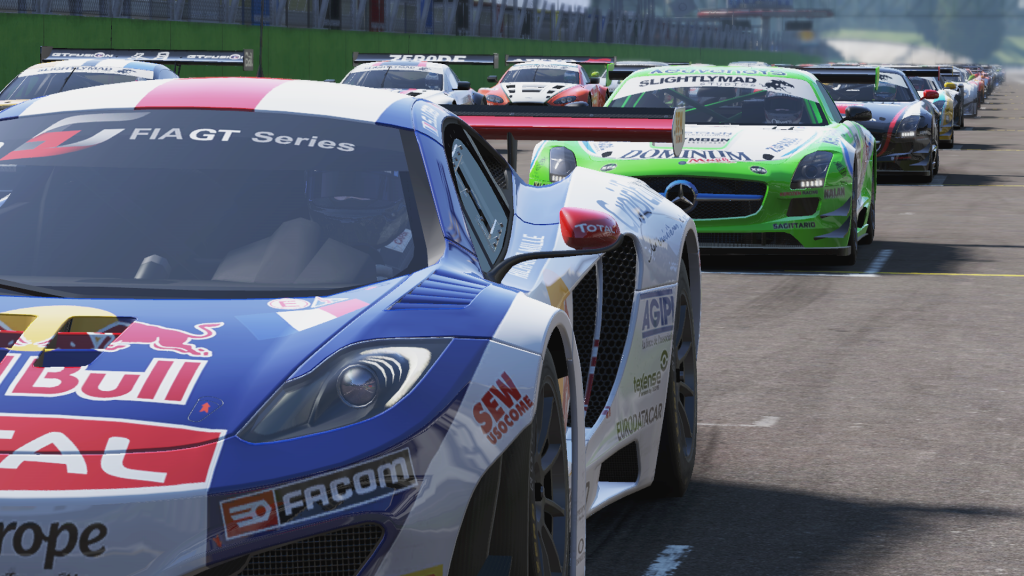Don’t ever play Project CARS with a steering wheel. There, I said it. If you have a compatible steering wheel for your chosen gaming platform (in this case, PS4, Xbox One, or PC), then you should absolutely use it to enjoy Project CARS.
It will be an exceedingly visceral and engaging experience, and your life will feel more complete having done so. You will feel that you have come as close as possible to driving a racing car short of actually doing it for real, which will cost far more than the game’s asking price.
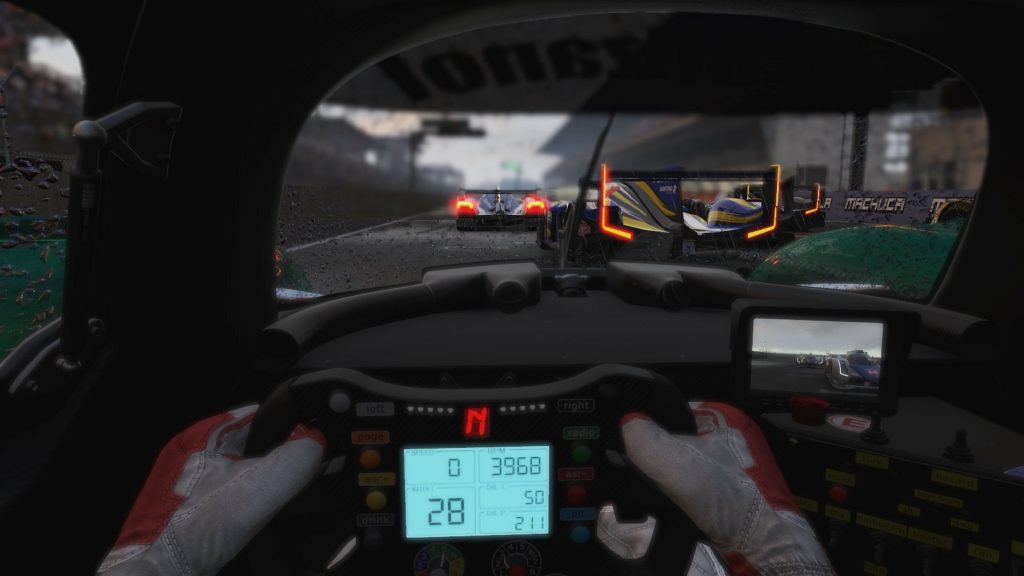
However, if you do not own a steering wheel and happen upon Project CARS at a shop, where they’ve set it up with a steering wheel and racing seat, or at a friend’s house, who offers to let you “try it out, it’s fun” – just don’t.
Because if you do, you see, it will – as is the case with real-life racing – utterly ruin your budget. You’ll see just how superb the simulation experience is, and a mere game controller will no longer cut the mustard.
The Way It’s Meant to be Played
The problem here is that getting into a steering wheel setup to play this game the way it’s meant to be played, will be costly.
Console gamers aren’t quite as spoilt for choice as their PC brethren: the Xbox One and PS4 are only compatible with a handful of wheels, and don’t support those fancy, cheaper Logitech wheels that PC gamers have access to.
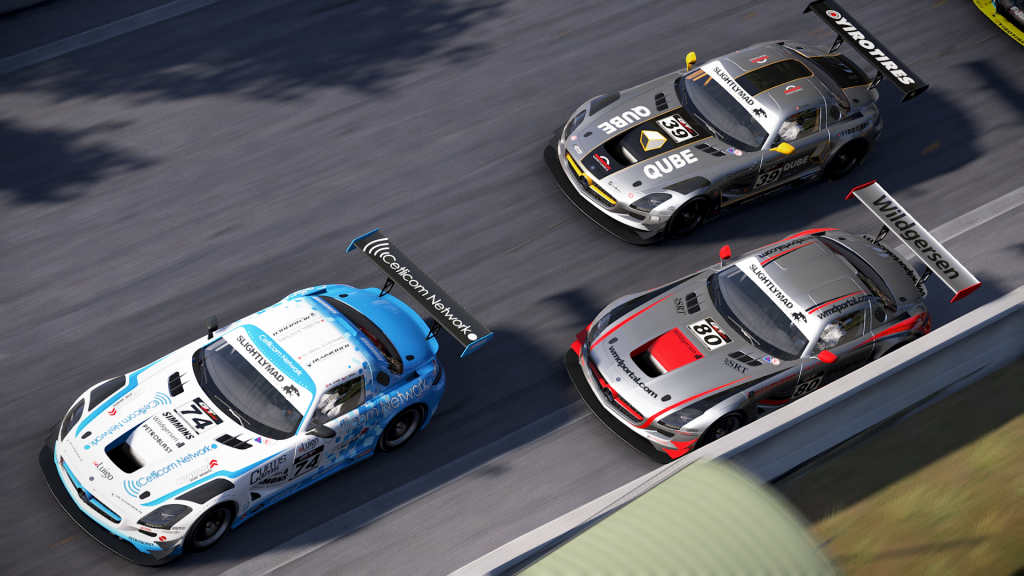
For this review we were kindly supplied with an Xbox One-compatible racing wheel from Thrustmaster. It’s a lovely Ferrari-branded wheel, Thrustmaster’s T300RS, but you’re looking at the close to R6 000 to get one. PlayStation 4 owners are in for the same sort of deal.
Customisation Aplenty
That’s not to say you cannot play the game with a controller, though. It’s just a bit more difficult, and far from the intended experience. In fact, there are a multitude of customisation options to adjust the gaming experience on the Xbox One and PS4’s analogue controllers, from fine-tuning deadzones to reassigning buttons.
You can enable electronic assistants to prevent cars from sliding out of control as well, and if the game still proves too challenging you can even adjust the difficulty for every single race.
However, if you’re only intending to play an arcade racer with a controller then you’re possibly not the kind of gamer who will appreciate the lengths to which the developer, Slightly Mad Studios (SMS), has gone to offer a real racing experience.
Manifold nods to realism
These small touches are many, and each one matters. For instance, in order to determine tyre pressures in race cars, the developers had to model the road surface temperature at each of the game’s 110 racetracks.
The air inside the tyres of a car is affected by the temperature of the tyre – the hotter the tyre, the more the air inside it expands. The more the air expands, the higher the pressure. Higher tyre pressures affect the handling of the car; and warm tyres also stick better.

In Project CARS, all of these things matter, and influence how your car handles.
In modelling the road surface temperature – to accurately determine a car’s grip levels and handling characteristics – the developers had to take into account the location of the sun and ambient air temperatures.
Weather Vain
Each track has its own, dynamic weather. When it’s colder there’s less grip and your engine can run cooler. An engine that runs cooler makes better power, and runs more reliably. An engine that runs too hot will lose power, or even overheat and blow up.
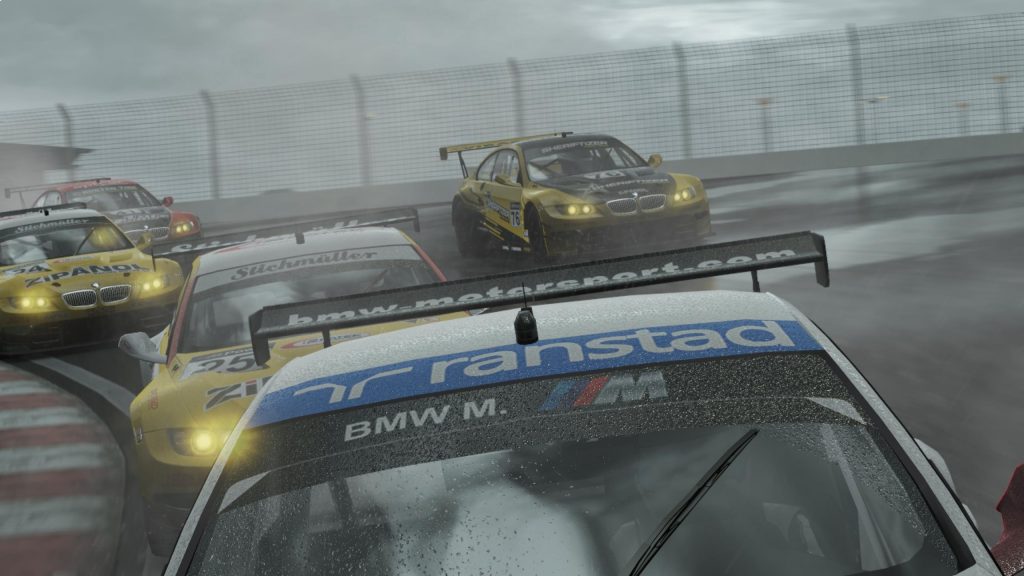
This is all in the game, by the way. You can actually set your car’s radiator opening to be too narrow, and the car will overheat. You’re warned about this through fully-functional instrumentation on the dashboard.
Now, rather than just guessing the location of the sun, the developers went and recreated the solar system. When you drive at the 24 Hours of Le Mans you will see the actual stars you’ll see if you were standing under that part of the French sky, on that exact date.

And if you were at Circuit de Spa Francorchamps, in Belgium, you’d see those stars too. At Spa you’d also be at an altitude of roughly 400 metres, which means the air your engine is sucking in is 4% thinner than it would be at sea level. Unless your car has a turbocharger, which compresses air and can (sort of) compensate for the less-dense air.
Astounding technical detail
The level of technical detail that contributes to the simulation in Project CARS is – as the above examples show – completely astounding. There are many more examples of how SMS has simulated the real-life ecosystems that impact a car’s performance, but what matters most is that it all works, and makes this one of the best racing simulations to date.
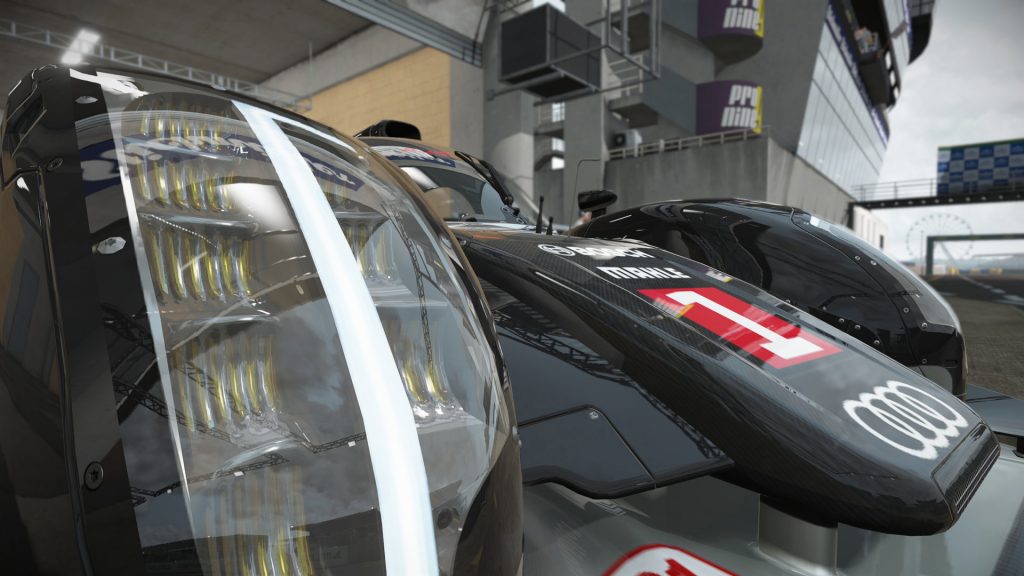
Hardcore sim gamers on PC might debate that Assetto Corsa has the edge in some areas, but console gamers can rejoice: not only is this cross-platform, it’s also better than the two fanboy favourites that have, until now, divided the sim racing communities. Gran Turismo and Forza Motorsport, there’s a new king in town.
Not flawless
Project CARS is not without its flaws, though. There are the aforementioned disadvantages to playing with a controller rather than a wheel, and that’s where the more-accessible Forza and GT series have it licked. In their quest to be mainstream they’ve made compromises, and playing with the standard controls is actually possible in those games.
While we’ve yet to see a next-gen GT, the Xbox One’s Forza 5 also just edges out Project CARS in the graphics department. One a purely objective scale, Forza 5 is cleaner, with less pop-up, better anti-aliasing, and just that bit more polish. That said, DriveClub on the PS4 is – at this time – the best-looking console racer bar none.
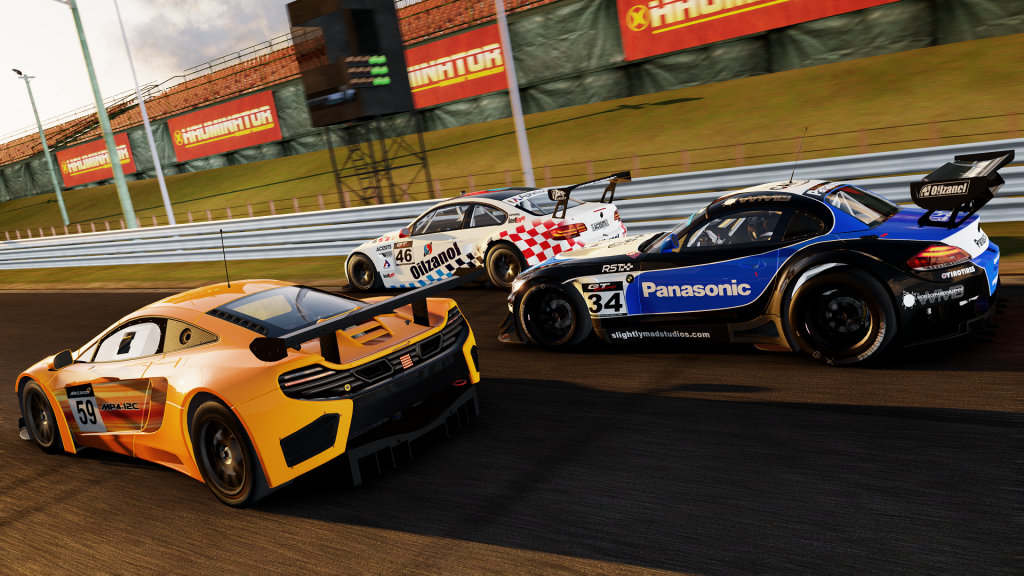
Project CARS still looks beautiful, though, and its toned-down colours do make it look more gritty and true-to-life. Its visual fidelity is a worthwhile compromise: instead of graphical perfection you can have races with up to 45 cars (!!!); a full day and night cycle, for the accurately modelled skies; and a full weather system, which ranges from clear skies to thunderstorms.
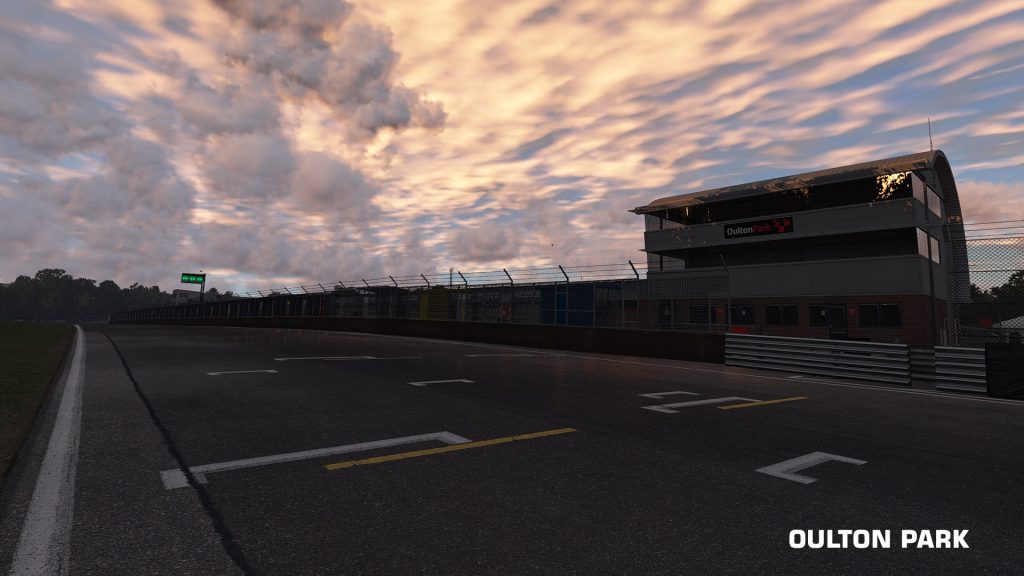
PC gamers even have the option to race at a real-world location, and the game will download that location’s current weather and recreate it for the race. This option is missing on consoles, presumably due to security restrictions dictated by Microsoft and Sony.
Exercise Good Judgement
Good judgment and sensibility should be exercised when choosing to race with a grid of 40 opponents in a thunderstorm, though. No matter what platform you’re playing on, the frame rate will waver from its locked 60 frames per second. The Xbox One, with its horsepower disadvantage, suffers the most when on-screen action gets intense, but Sony’s console is not exempt from performance hits.
At the time of writing, SMS has confirmed it is working on a patch to improve performance on the Xbox, so you know that they’re listening to feedback from the community.
Community-driven
That brings us neatly to the next point: how said community has contributed to this game’s development and content. The second half of its name does not just less-than-subtly allude to its content, but also its origins: CARS actually stands for Community Assisted Racing Simulator.
The successful product of a crowd-funding venture, Project CARS saw members of the community – those who financially backed its development up front – contribute in many ways. This included helping to beta test early builds of the game, to evaluate performance, but also to vote on what should and should not be included.
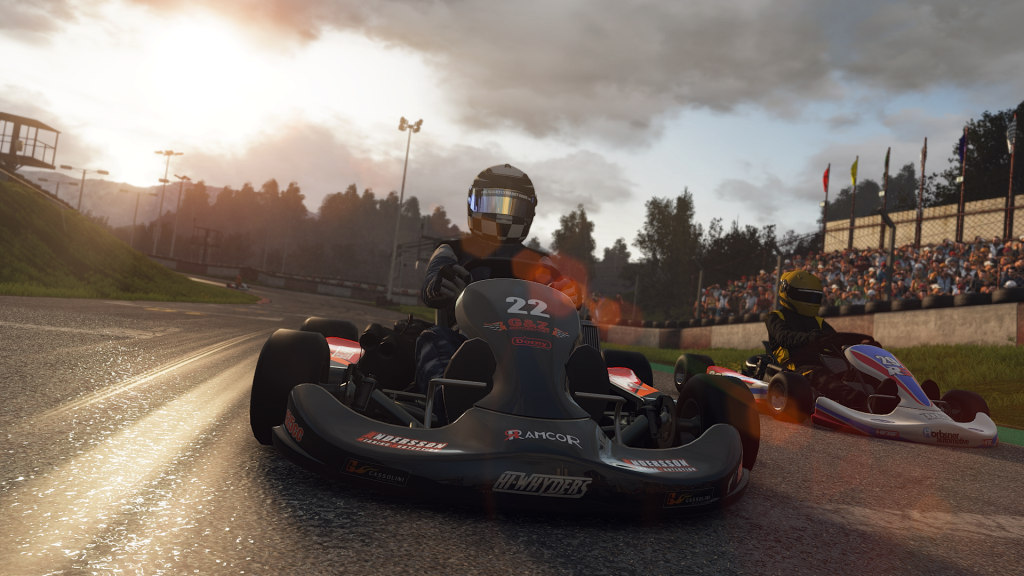
Sim racers and car fans are a fickle bunch, so you know that the things done to model the simulation (wind, air, altitude, sun, temperatures) were requested by obsessive pedants. For the better, we might add.
So too was the game’s selection of cars. A car collect-a-thon this is not: there are not 1 000-plus cars, as per GT and Forza, so if you’re looking for vehicle variety you may be sorely disappointed.
License Lament
Part of this comes down to licensing: vehicle manufacturers charge a lot of money to have the likenesses of their wheeled creations represented in games. Thus we see no Ferrari or Lamborghini. Or Chevrolet, Toyota or Nissan, or many other names familiar in motorsport.
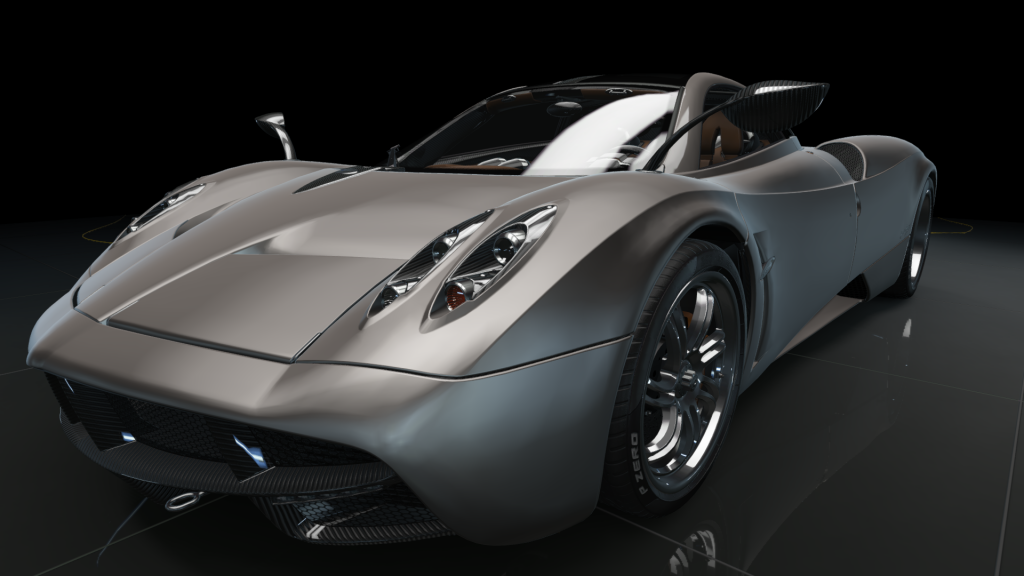
Only a few brave manufacturers have agreed to have their vehicles featured in Project CARS, and those in the game are very special. These include historic machines, such as the Lotus 98T Formula 1 car from the 80s. It is beautifully recreated here, replete with the real car’s hilarious temperament when trying to reign in the 1 500 horsepower put out by its massively-turbocharged engine.
Other historic machines include classic touring cars from Ford, Mercedes, and BMW. There are modern-day race cars, most of which feature in race formulas such as American Le Mans Series and GT racing series. The handful of road-going machines is small, but highlights include the 900-plus horsepower hybrid McLaren P1, and the utterly insane Ariel Atom.
Fictional Fancy
In cases where SMS was unable to secure a license, it made do with fictional cars. These include go-karts modelled on real-life race karts, as well as single-seater formula cars that span a number of performance categories.
All-in, there are 74 cars at launch, depending on whether you have any pre-order DLC. Happily, SMS has confirmed there will definitely be more cars coming. We can only hope that some of the carmakers that aren’t featured see how good this is, and line up to have their machines be made available as downloads in the near future.
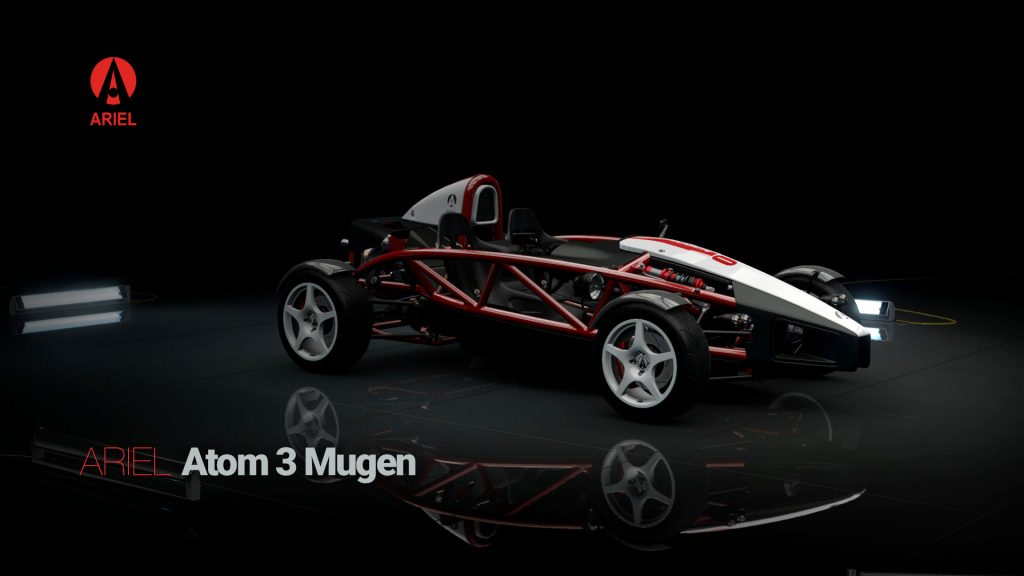
Most importantly, each car behaves differently, and remains true to the characteristics of its real-life counterpart. That’s not just my best guess, either: I have been privileged enough to drive at least three of the game’s cars in real life, and can attest to the levels of realism. From steering feel, to the way they wallow in comparison to race cars.
Aural pleasure
They sound good, too. Project CARS is an aural delight that edges out most of the competition, and blows away anything heard in Gran Turismo, to date. Racecars have gearboxes and differentials that whine as they load up; engines sound angry; and road cars are as quiet as you’d imagine.
The only gripe here is that tyre noises are a bit too subdued – and these are often the only noises you have to judge how much grip you have when pushing hard through the corners. But as long as you’re playing with a steering wheel, it shouldn’t really matter.
Truly exquisite
Car lovers may find less to love in Project CARS than other games, but what is there is truly exquisite. As the lineup of cars increases, and updates smooth over its few rough edges, there will be fewer reasons to not want to play it. Very rarely do real innovations and breakthroughs come to a genre – but Project CARS is this generation’s Gran Turismo. And higher praise there is not.
Good:
- Hyperactive realism
- Superb sound
- Visuals
- Track selection
Bad:
- Sucks with a controller
- Performance can take a hit with big grids
- Limited car selection
Project CARS is out now, and is available on PlayStation 4, Xbox One and PC for a recommended retail price of R899 (console) and R599 (PC).
This review is based on the Xbox One version.

